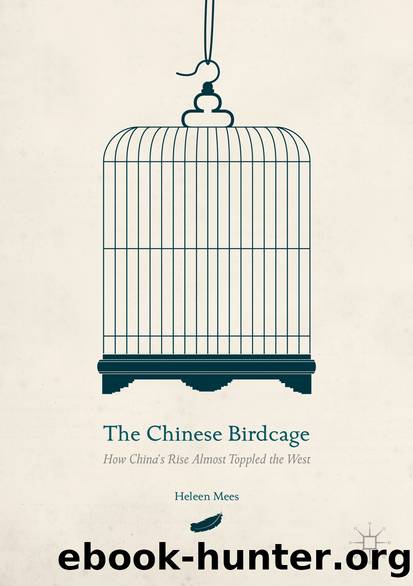The Chinese Birdcage by Heleen Mees

Author:Heleen Mees
Language: eng
Format: epub
Publisher: Palgrave Macmillan US, New York
The Use of the Capitalist Surplus
In Arthur Lewis ’s model for economic development with unlimited supplies of labor , the capitalist surplus is the sine qua non for economic development. According to Lewis , rapid capital accumulation is the prerequisite for economic development so a country could not go through the industrial revolution until savings increased relatively to national income. The model effectively predicts that as long as unlimited supplies of labor are available at a constant real wage and if any part of profits is reinvested in productive capacity, profits will grow continuously relatively to the national income, and capital formation will also grow relatively to the national income.
While the rising share of profits in national income at the expense of labor ’s share is instrumental to economic development according to Lewis , it is also where his model is most vulnerable. As Lewis himself clearly realized, there is no guarantee that the capitalists will use the capitalist surplus for capital formation. Malthus , the eternal pessimist, imagined that the capitalist surplus would lead to a commodities glut, that is, a widespread excess of supply over demand. Ricardo , more optimistically, rebutted that there would be no such glut as what the capitalists did not consume themselves they would use (to pay the wages of workers) to create more fixed capital.
Marx agreed with Ricardo , as he believed that capitalists have a passion for accumulating capital . The new fixed capital would then, in the next stage, make possible the employment of more people in the capitalist sector . Ricardo added that if capitalists did not want to accumulate, they would consume instead of saving. Employment in the next stage would not be as big as it would have been if they had created more fixed capital and so brought more workers into the capitalist sector, but so long as there is no hoarding, it makes no difference to the current level of employment, whether capitalists decide to consume or to save.
Part of the capitalist surplus is consumed. As for the part which is consumed, Arthur Lewis realized that some of it is a genuine payment for service rendered for managerial or entrepreneurial services, as well as for the services of public administrators, whether these are paid salaries out of taxes, or whether they live off their rents. However, Arthur Lewis also acknowledged that these managerial and entrepreneurial services, as well as the public services, might well be overpaid. The solution to such overpayment was in Lewis ’s eyes progressive taxation. He saw the overpayments of managers and administrators also as an argument for nationalization, albeit a dubious one.
When an economy eventually runs out of its unlimited supplies of labor, it reaches the Lewis Turning Point, named after Arthur Lewis. Beyond the Lewis Turning Point, additional demand for labor will raise the equilibrium wage rate, and the economy will conform to the neoclassical model.
Download
This site does not store any files on its server. We only index and link to content provided by other sites. Please contact the content providers to delete copyright contents if any and email us, we'll remove relevant links or contents immediately.
| Africa | Americas |
| Arctic & Antarctica | Asia |
| Australia & Oceania | Europe |
| Middle East | Russia |
| United States | World |
| Ancient Civilizations | Military |
| Historical Study & Educational Resources |
The Story of China by Michael Wood(932)
Mr. Selden's Map of China by Timothy Brook(776)
Philippines--Culture Smart! by Culture Smart!(673)
Heroic Hindu Resistance To Muslim Invaders (636 AD to 1206 AD) by Sita Ram Goel(658)
Akbar: The Great Mughal by Ira Mukhoty(653)
The Meaning of India by Raja Rao(632)
Vedic Physics: Scientific Origin of Hinduism by Raja Ram Mohan Roy(630)
Food of India by unknow(622)
Banaras by Diana L. Eck(617)
India--Culture Smart! by Becky Stephen(605)
China Unbound by Joanna Chiu(605)
First Platoon by Annie Jacobsen(602)
Mao's Great Famine: The History of China's Most Devastating Catastrophe, 1958-1962 by Frank Dikötter(596)
North of South by Shiva Naipaul(591)
Insurgency and Counterinsurgency by Jeremy Black(569)
A History of Japan by R.H.P. Mason & J.G. Caiger(566)
The Genius of China: 3,000 Years of Science, Discovery, and Invention by Robert Temple(566)
How to Be a Modern Samurai by Antony Cummins(565)
The Digital Silk Road by Jonathan E. Hillman(553)
